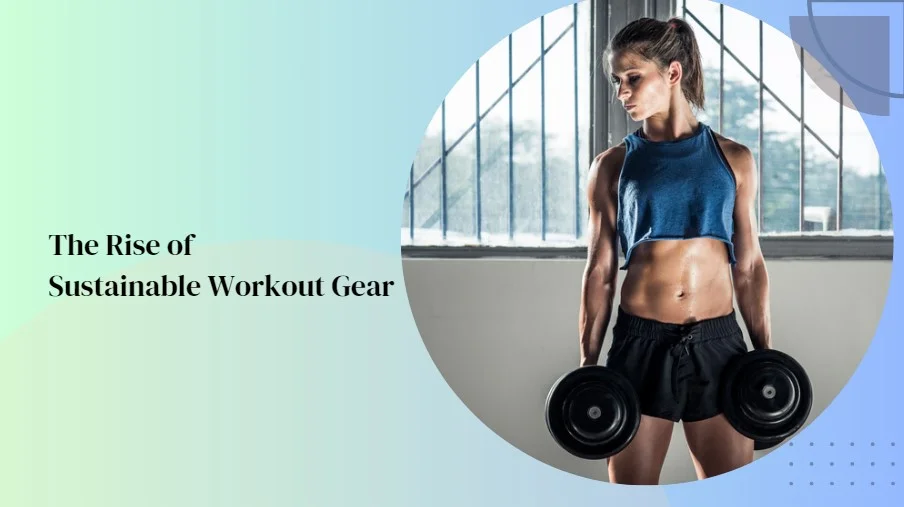Table of Contents
The fitness industry has always been about transformation, growth, and pushing boundaries. Today, it’s not just our bodies that are experiencing a transformation, but the very gear we use. As the global community becomes increasingly conscious of the environmental impact of their choices, sustainable workout gear has surged in popularity. Here’s a deep dive into why and how.
1. The Environmental Concerns with Traditional Workout Gear
Plastic Predicament: Traditional workout gear, especially activewear, is primarily made from synthetic fibers like polyester, a petroleum-based product. Producing these materials consumes significant energy and water resources and leads to microplastic pollution, affecting marine life.
Chemical Cocktails: The dyes and finishes used in typical workout apparel often contain harmful chemicals, which, when washed, can leach into water systems, impacting aquatic ecosystems.
2. Enter Sustainable Workout Gear
Sustainable workout gear, crafted from eco-friendly materials and responsible processes, addresses the environmental concerns posed by conventional counterparts.
Natural Fibers: Materials such as organic cotton, bamboo, and Tencel are not only biodegradable but are also cultivated without harmful pesticides or synthetic fertilizers.
Recycled Materials: Brands are now innovatively using recycled PET bottles, discarded fishing nets, and even old garments to craft high-performance workout gear.
3. Performance Meets Sustainability
Contrary to the belief that eco-friendly means compromised quality, sustainable workout gear often outperforms traditional variants.
Enhanced Breathability: Natural fibers tend to be more breathable, ensuring better temperature regulation during workouts.
Durability: Sustainable materials often have a longer lifespan, meaning your workout gear won’t wear out quickly.
4. Ethical Production Practices
Sustainability isn’t just about materials. Many brands producing green workout gear are also ensuring ethical production practices.
Fair Wages: Ensuring workers get paid adequately and work in safe conditions.
Reduced Carbon Footprint: Opting for local production and sourcing reduces transportation emissions.
5. Broader Wellness Connection
For many, choosing sustainable gear is part of a broader commitment to holistic wellness.
Mindful Consumption: Understanding the source of your gear fosters a deeper connection to your wellness journey.
Harmony with Nature: Many believe that by protecting the planet, they’re also nurturing their well-being.
6. Future-forward Investment
Purchasing sustainable workout gear might seem pricier initially, but its durability and longevity make it a wise investment in the long run.
7. Leading the Way: Brands Embracing Sustainability
Several brands, both big names and niche startups, are setting trends in the sustainable workout gear space. Their innovative approaches and commitment to green practices are reshaping industry norms.
8. The Role of Consumers: Driving the Change
Consumer demand plays a pivotal role in this transition. By opting for sustainable choices, individuals signal to the industry the importance of green initiatives.
Educating Through Choices:
As consumers become increasingly informed about environmental issues, their choices start reflecting this awareness. By prioritizing eco-friendly gyms, choosing sustainable workout gear, and supporting fitness centers that adopt green practices, they play an active role in educating businesses about the need for such measures. Their choices aren’t just transactional; they are indicative of an informed stance on sustainability, nudging the industry to respond accordingly.
Feedback and Community Engagement:
Another avenue where consumers wield significant influence is through feedback mechanisms. By actively reviewing and promoting gyms that have sustainable practices, or voicing concerns over those that don’t, consumers create a more immediate incentive for businesses to adapt. Furthermore, consumers are not just passive participants; they often become active members of a community, engaging in tree plantation drives, clean-up activities, and other initiatives organized by their fitness centers, thereby amplifying the impact of these eco-friendly efforts.
Economic Implications:
From an economic perspective, consumers drive market trends. When a significant portion of the clientele begins to prefer eco-friendly fitness centers, it creates a competitive advantage for those businesses that are sustainable, leading to potential increased profitability and market share. This economic nudge often prompts even the most resistant businesses to reconsider their stance on sustainability, recognizing the potential for both increased profit and positive environmental impact.
Personal Responsibility and Collective Impact:
On a more individual level, each consumer’s choice to support green initiatives represents a personal commitment to a healthier planet. When aggregated, these individual commitments result in a significant collective push towards sustainability. This collective drive, backed by personal responsibility, ensures that the push for eco-friendly practices in the fitness industry isn’t just a fleeting trend but a long-lasting transformation.
Conclusion:
The rise of sustainable workout gear underscores a collective shift in mindset. As we aim to build stronger, healthier bodies, it’s heartening to see a parallel move towards building a healthier planet. In the grand scheme of things, every squat, lunge, and leap made in sustainable gear takes us a step closer to a greener future.
Read more: Comparing Facilities of the Top Gyms in Europe

